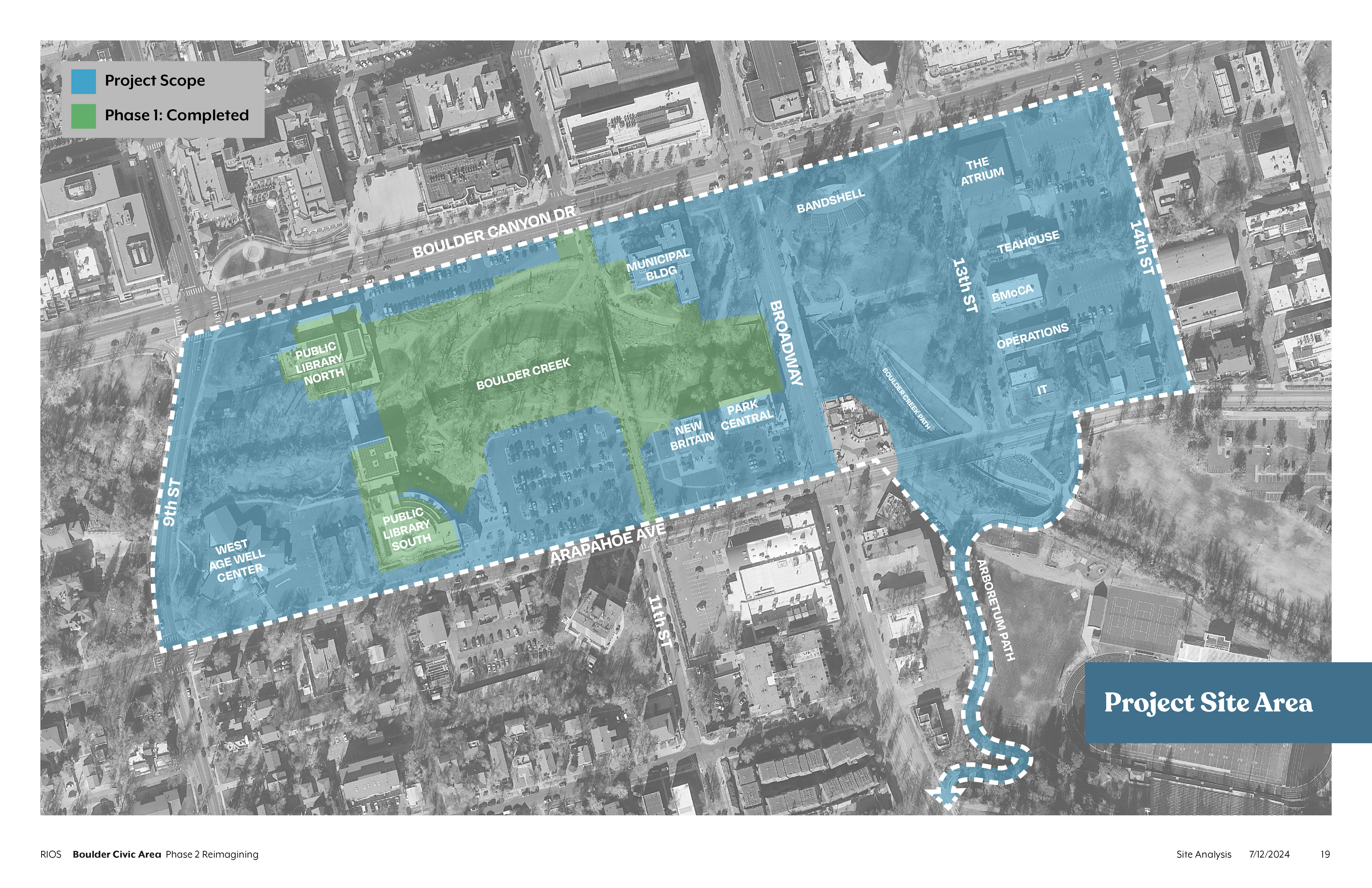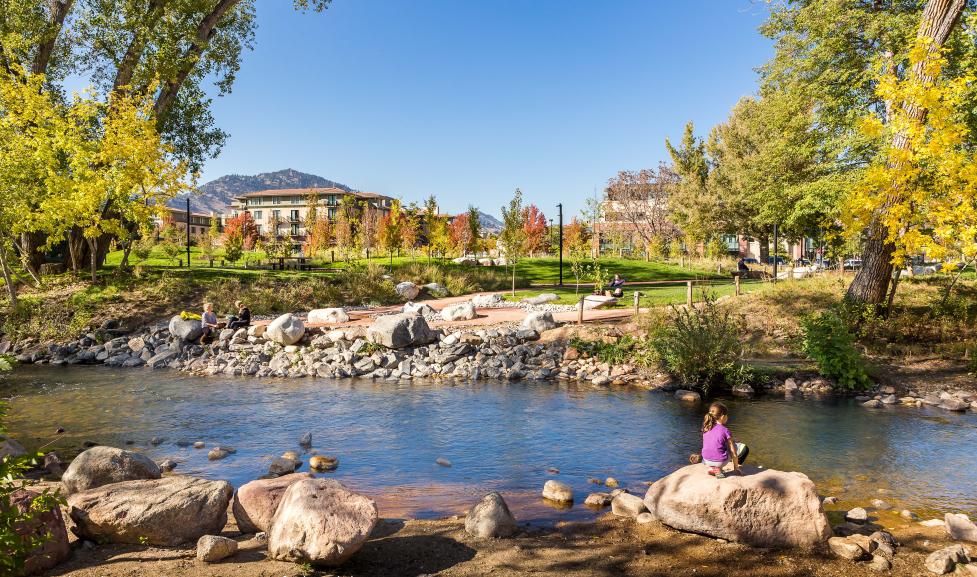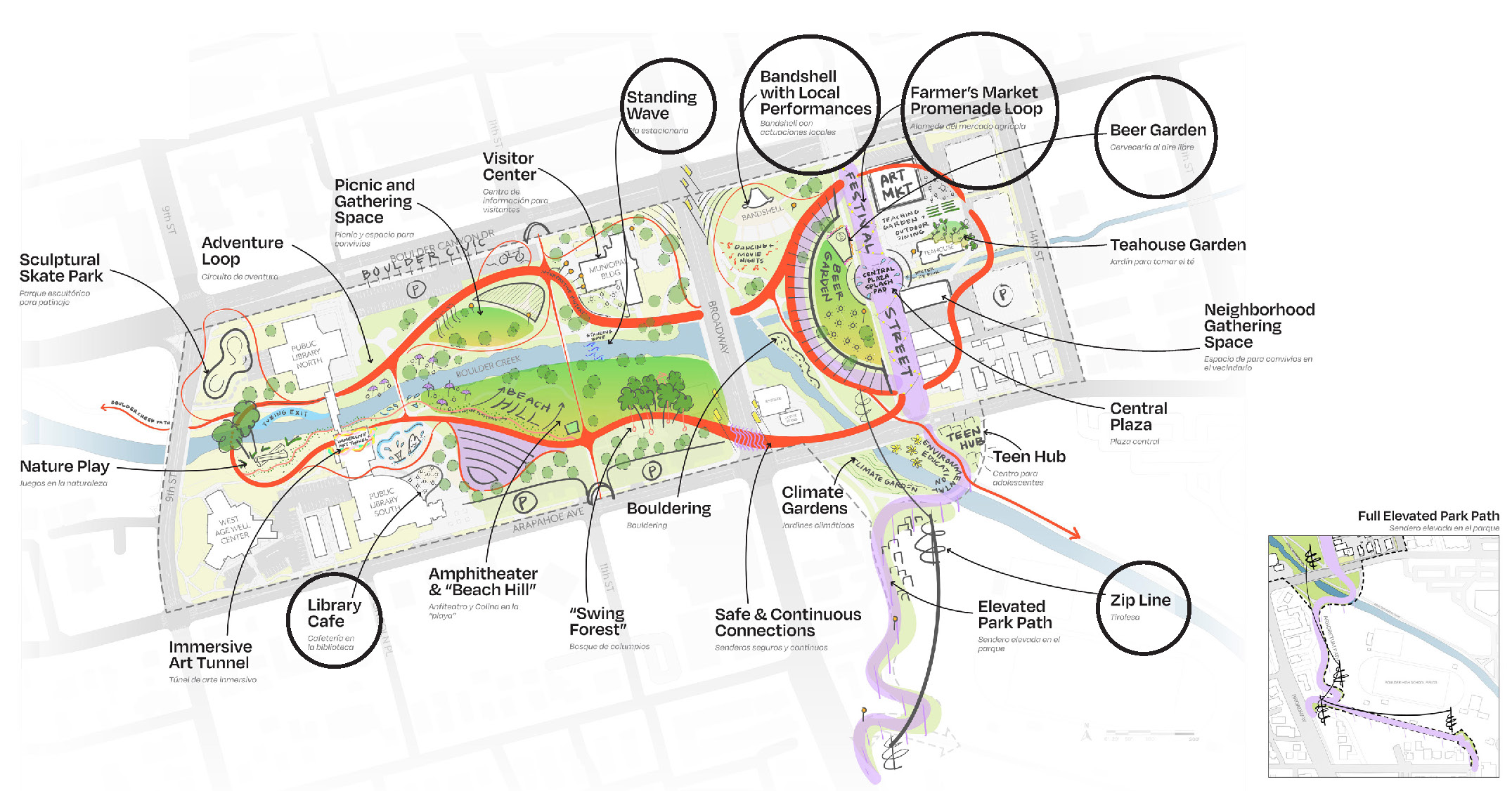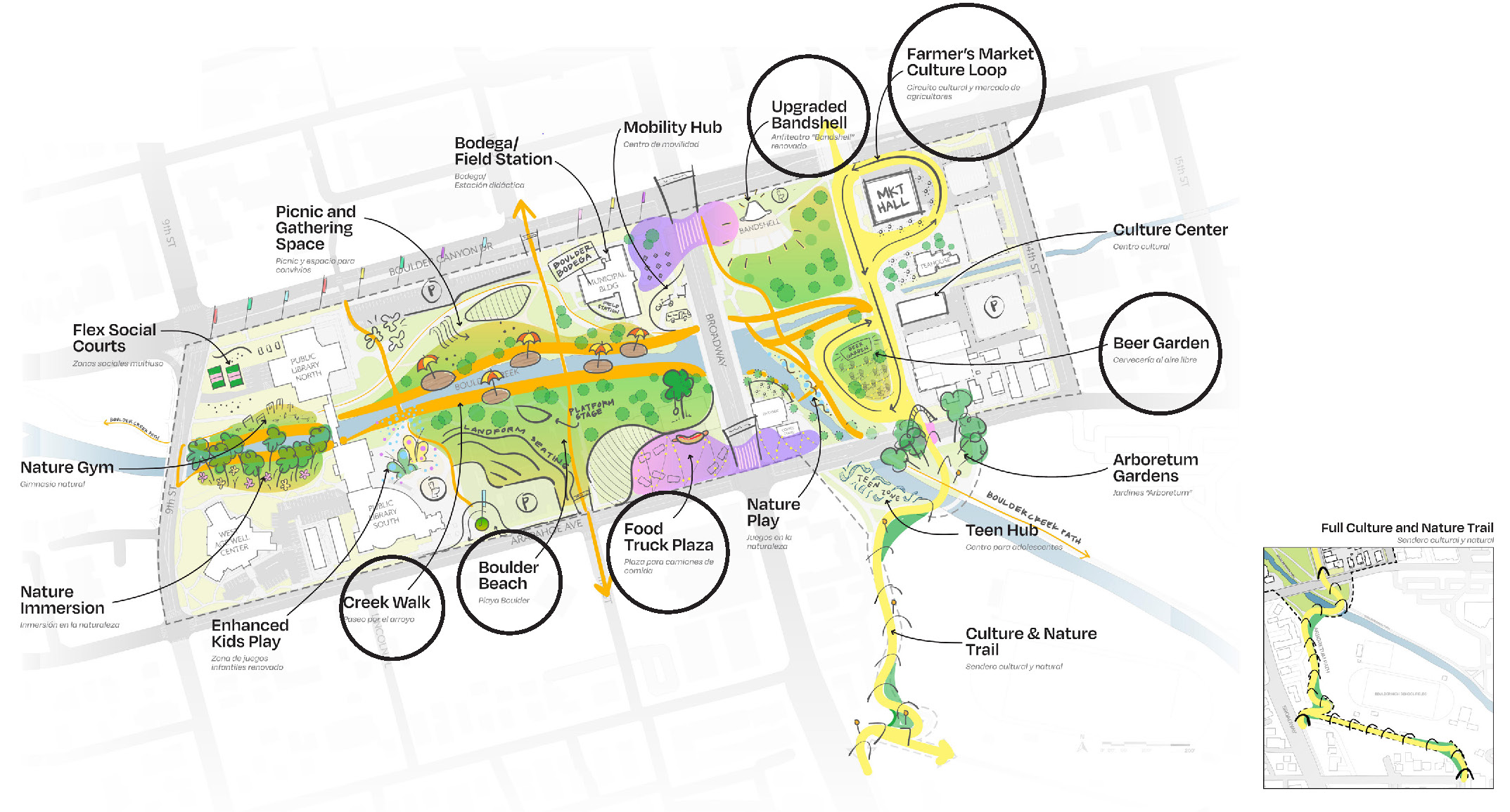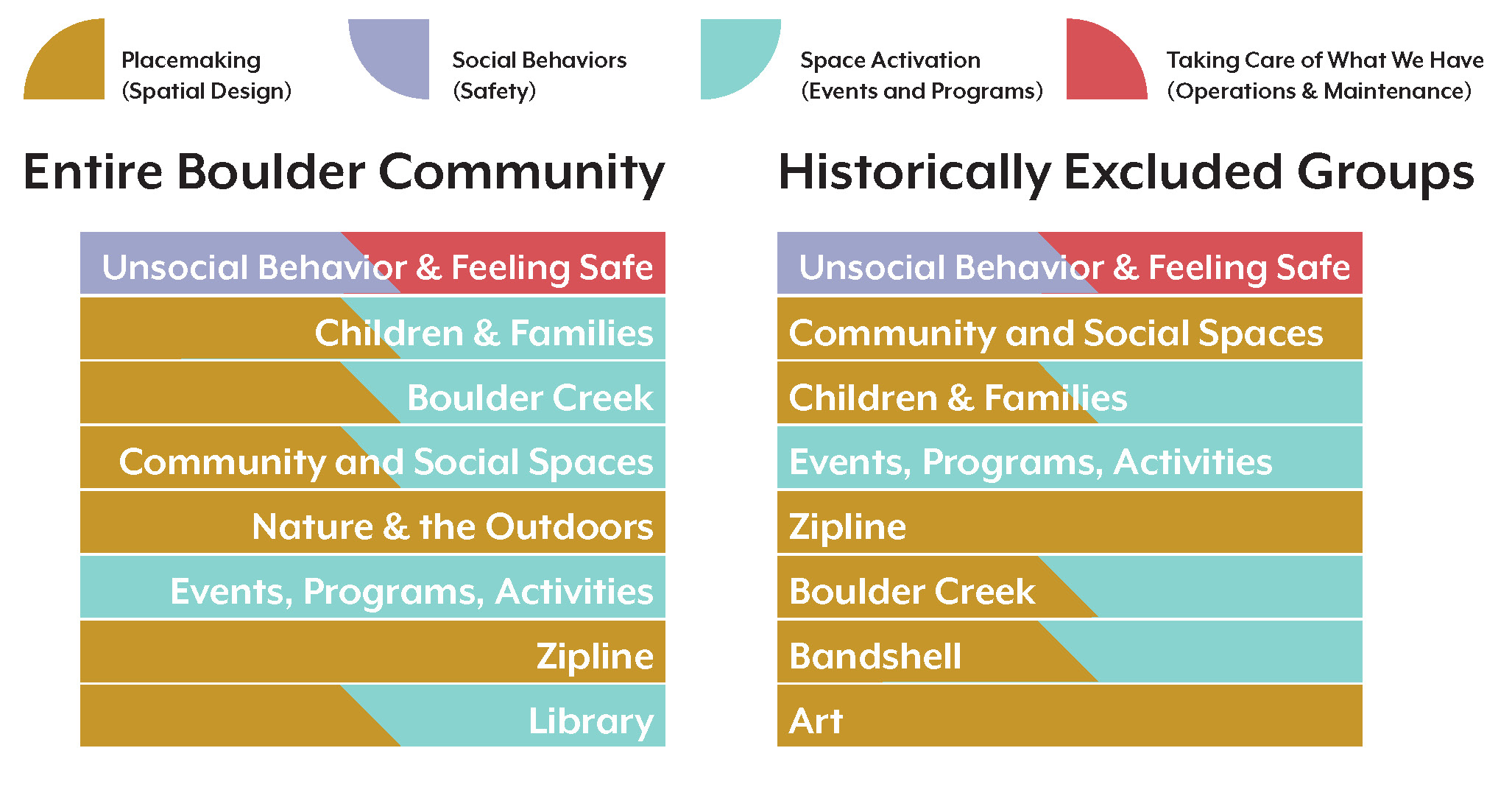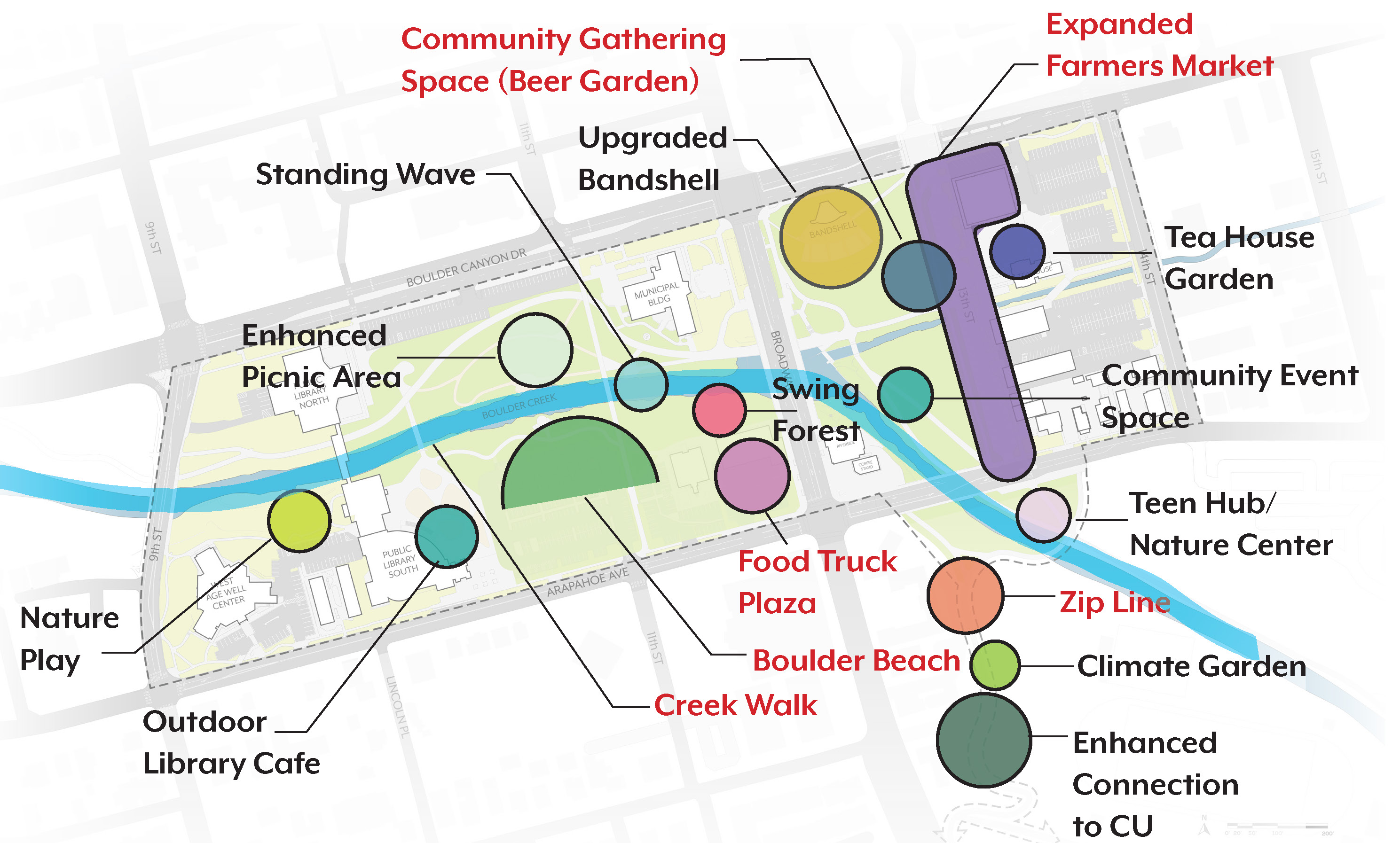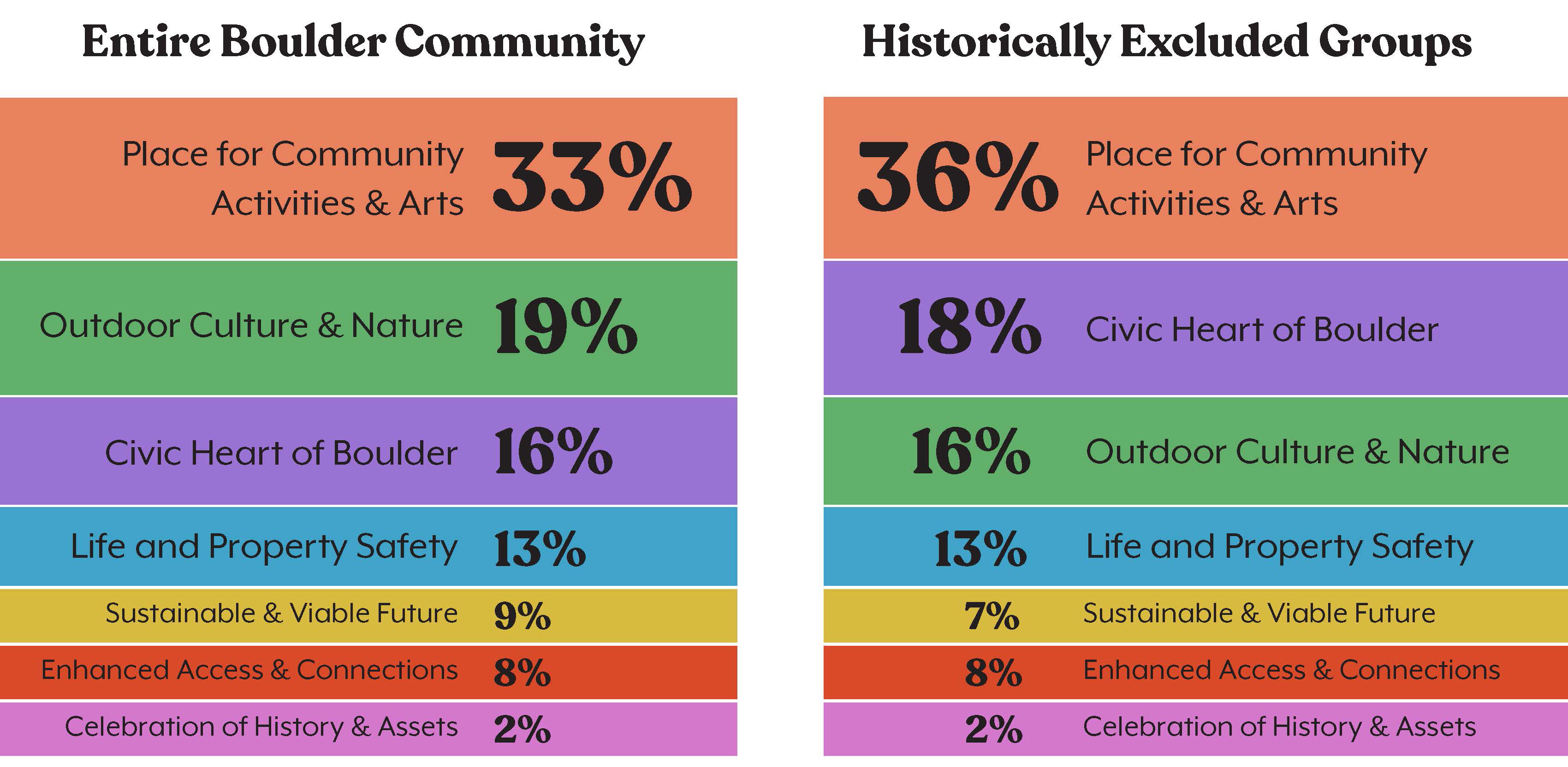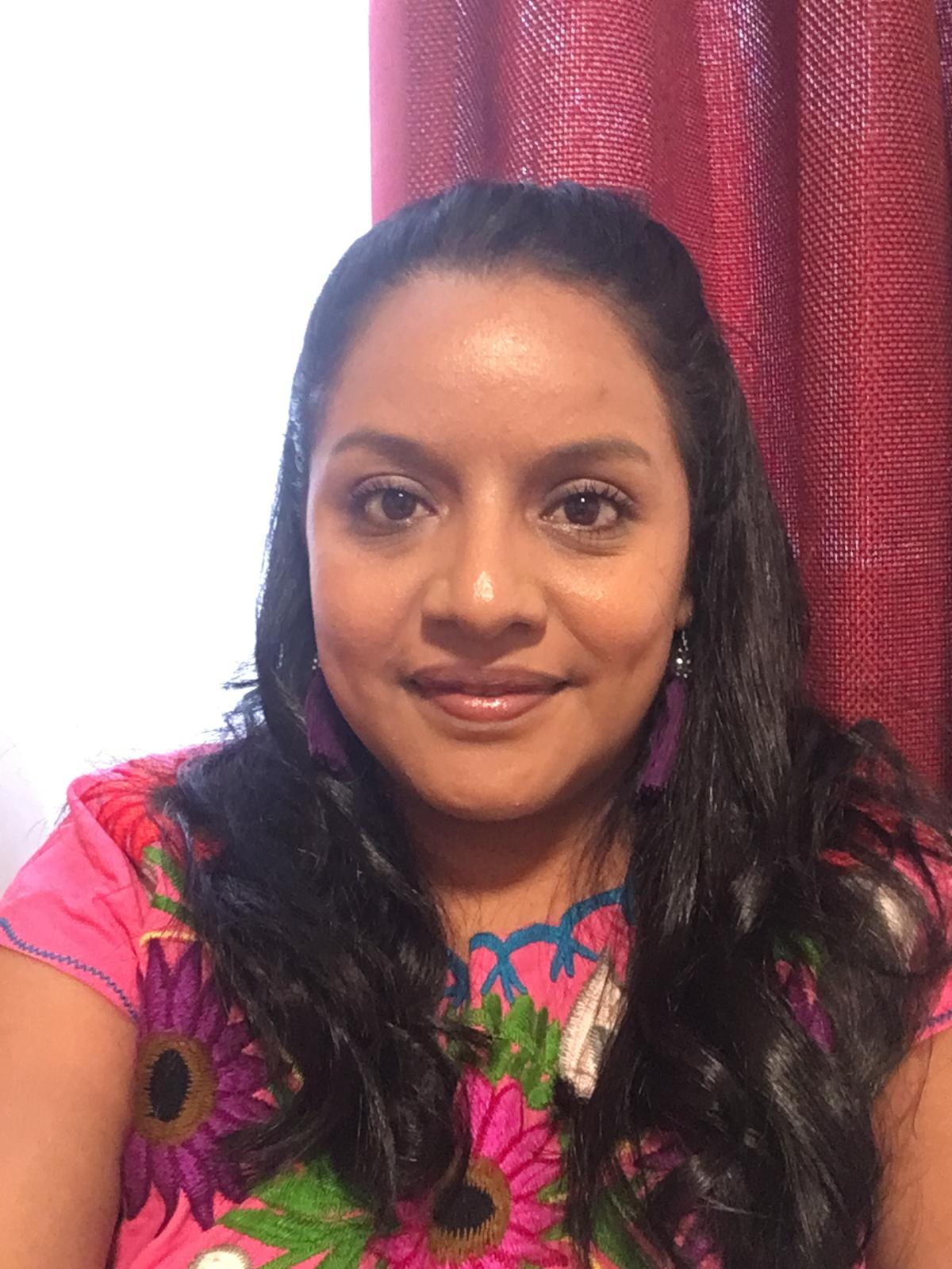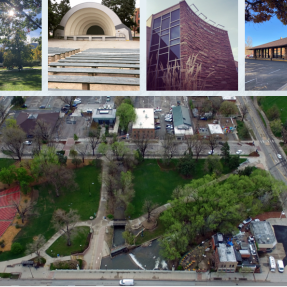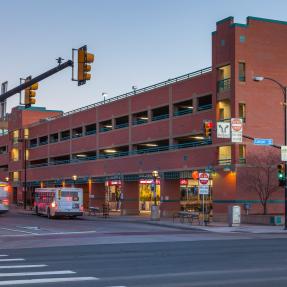Boulder has routinely been named one of the top places in America to call home, and in keeping with this charge, Phase 2 of the Civic Area Project is critical to maintaining this way of life. We have the opportunity at the heart of downtown to rethink urban park design to ensure a strong connection to nature, promote the robust local economy, support the dynamic art scene, and continue to cultivate Boulder’s thriving culture.
The project vision encompasses the makings of a beautiful recreational river park at the core, with incredible views of the celebrated Flatirons. This area is flanked by bookends that can entertain civic and commercial development that are alive with activity, collaboration, and innovation.
This will be a space for everyone - a lively and distinct destination that reflects the principles laid on in the 2015 Civic Area plan. A place where people of all ages, abilities, backgrounds, and incomes feel welcome to recreate, socialize, relax, and enjoy the ambiance of a high-altitude urban center at the feet of the Rocky Mountains. The green ribbon along Boulder Creek is the unifying design that will weave metropolitan and park space into a richly diverse, sustainable, equitable, resilient, communal, recreational, artistic, historic, cultural, educational, and social gathering space that reflects Boulder’s identity as a funky, fun and friendly place to live.
This project will also focus on how this vital downtown area can connect to the university on the ‘hill’. The Civic Area will also potentially see city-owned buildings become available as city staff move to a new location. This allows us to reimagine the reuse of these assets to create centers where community members can meet, interact, and innovate. All together, these elements create a true civic heart for the Boulder community, a place to tell, enjoy, and participate in Boulder’s story.
The planning process for Boulder’s Downtown Civic Area kicked off in 2012 with the initial Plan for Boulder’s Civic Area, adopted by Council in September 2013. This document provided a high-level vision with design principles for Civic Park, Central Park, 13th Street, East Bookend, West Bookend, Pearl Street, the Arboretum Path, and major pedestrian connections between these spaces. In 2015, City Council approved Boulder’s Civic Area Plan, refining the initial thinking with an updated concept and program plan. Throughout these two key efforts, a robust public engagement, stakeholder, and steering committee process was incorporated into the overall project timeline to ensure the proposed Civic Area enhancements reflected the values and goals of the community.
The 2015 Civic Area Plan PDF and resulting redevelopment efforts seek to breathe new life into some of Boulder’s most beloved, historic, and iconic public spaces. With parts of Phase 1 (as outlined in the 2015 plan) completed in 2018, Phase 2 of this project will review Civic Park, Central Park, the Arboretum Path, 13th Street, and the West and East Bookends. They will also review multiple city-owned buildings as key components to understand future land use, development opportunities, and which park spaces will move forward for the next phase of implementation. The outcome of the project is to lay out a dynamic, connected, and vibrant collection of community spaces enjoyed by residents and visitors in the Civic Area, guided by the seven main principles from the Civic Area Plan PDF:
Main design priorities:
- The Civic Heart of Boulder
- Life & Property Safety
- Outdoor Culture & Nature
- Celebration of History & Assets
- Enhanced Access & Connections
- Place for Community Activity & Arts
- Sustainable & Viable Future
